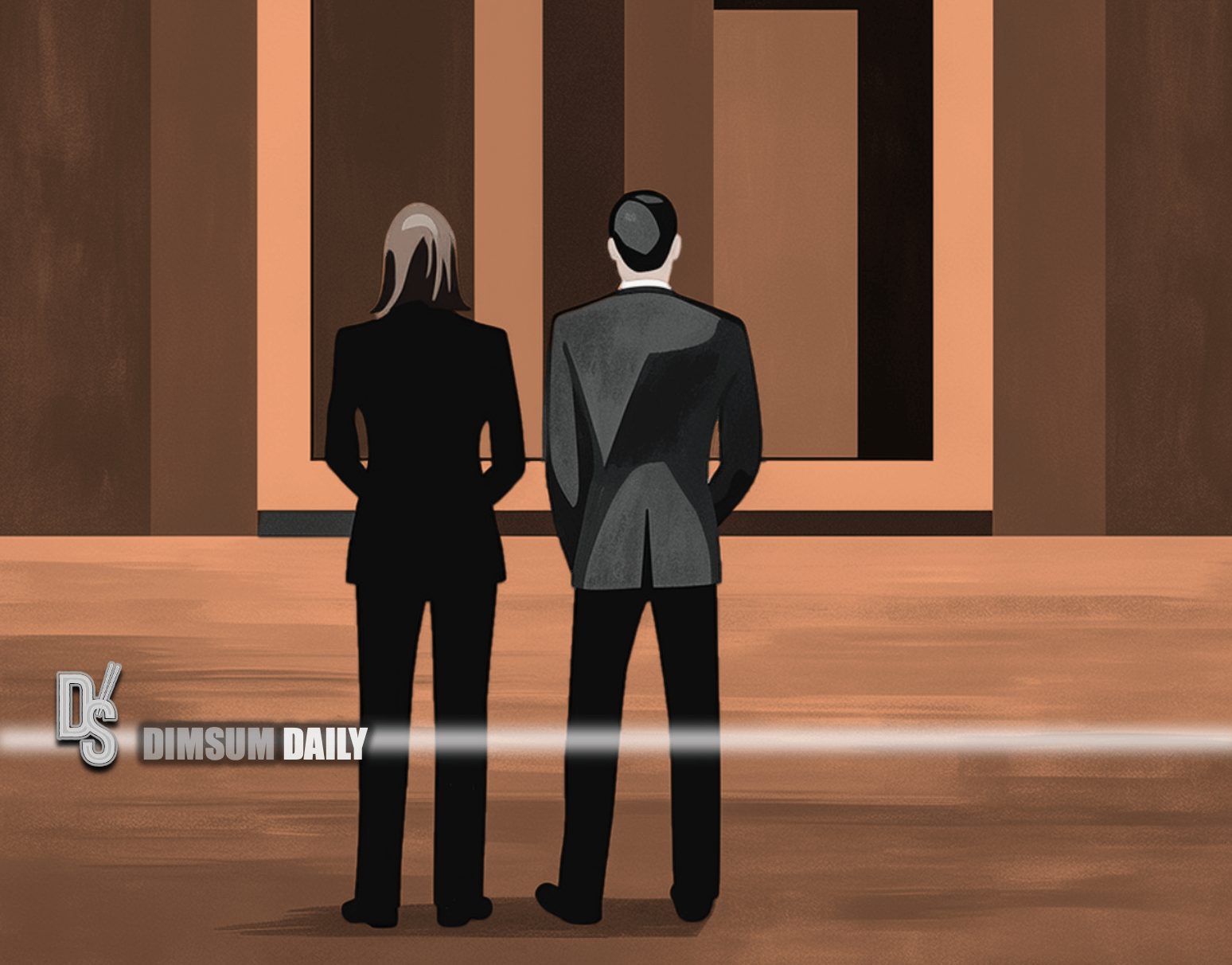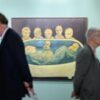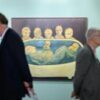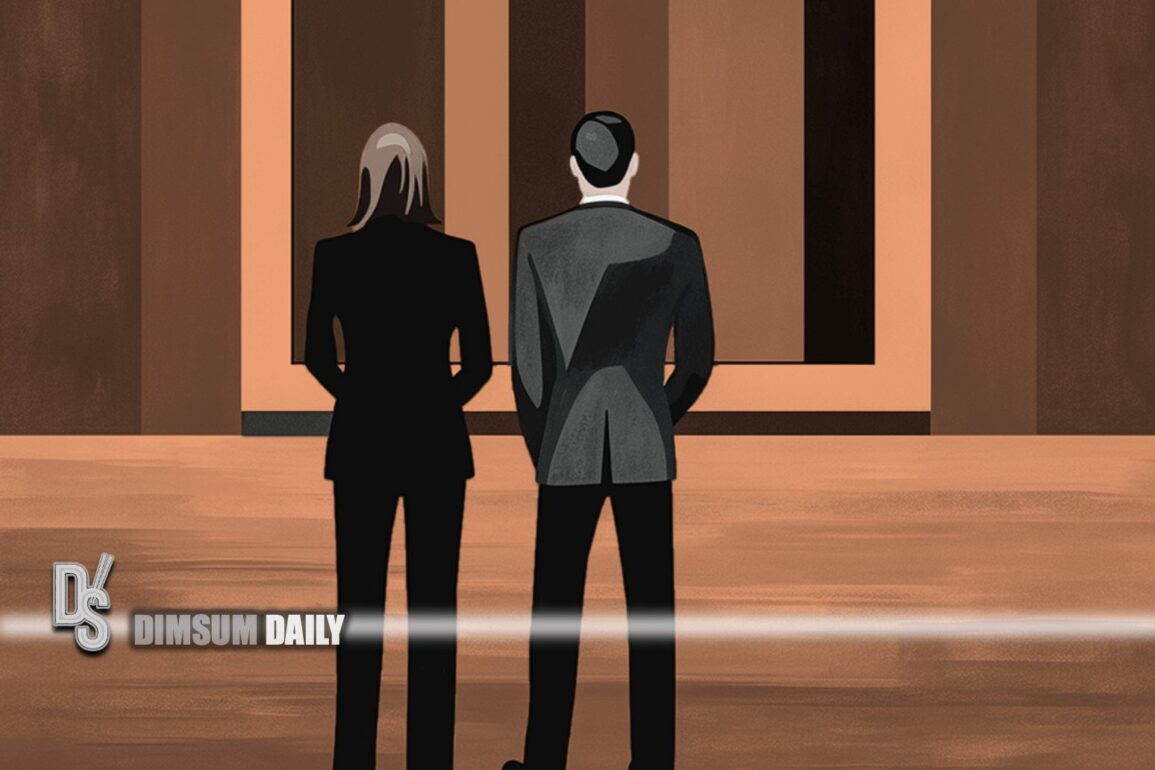
9th April 2025 – (Hong Kong) The once-thriving global art market, a space where masterpieces exchanged hands with the casualness of routine stock transactions, now faces a terrain rife with uncertainty and shrinkage. As per the latest Art Basel and UBS Global Art Market Report, worldwide sales plummeted by 12% to US$57.5 billion in 2024, marking the second consecutive year of decline following the robust post-pandemic surge that drove the market to US$68.1 billion in 2022. However, these numbers, only suggest the deeper fractures emerging beneath the surface—cracks that loom to widen further in 2025 amidst geopolitical unrest, financial instability, and a mounting US-led trade conflict with China that are reshaping the dynamics of cultural interchange.
The current situation in the art market embodies a duality. On one hand, the sharp decline in high-value transactions—artwork sales surpassing $10 million at auctions plunged by 39%, while those under $50,000 surged in both quantity and worth—hints at a form of democratization, albeit one spurred by necessity rather than hope. Referred to as the “Great Bifurcation” by experts, this shift has disrupted traditional structures, empowering smaller galleries while compelling prominent dealers to adjust hastily. However, even amidst this positive development lies a touch of irony: the very factors propelling this reconfiguration—escalating expenses, fractured trade relationships, and a crisis of faith among affluent buyers—could potentially undermine the very essence of the market.
Central to this unfolding drama is the spectre of protectionism. President Donald Trump’s recent imposition of sweeping tariffs on Chinese goods, alongside retaliatory measures from Beijing and other nations, has injected fresh volatility into global markets. The S&P 500’s precarious flirtation with bear territory, described by The Economist as more destabilising than the 2008 financial crisis or the COVID-19 pandemic, has sent shockwaves through the art world. For an industry reliant on cross-border flows of capital and cultural artefacts, the ramifications are profound. New York, long the epicentre of art commerce due to its frictionless international trade ecosystem, now faces existential questions as tariffs disrupt the movement of artworks and amplify transactional costs. Meanwhile, China—whose art market contracted by 31% in 2024, sliding to third place globally—grapples with a property market slump and slowing economic growth, further dampening its once-ascendant cultural influence.
Just as the art market tentatively embraced digital innovation—online sales stabilised at 18% of total value in 2024, double pre-pandemic levels—geopolitical headwinds have undermined its physical lifelines. Auction houses, once buoyed by record-breaking sales like the $1.6 billion Paul Allen collection in 2022, now report a 36% decline in contemporary art transactions, their lowest ebb in six years. Discretion has become the watchword for high-net-worth individuals, with private sales through channels like Christie’s and Sotheby’s rising by 14%, even as public auctions flounder. This pivot towards opacity, while pragmatic, risks alienating a new generation of collectors weaned on transparency and digital access.
Operating expenses for galleries surged by 10% in 2024, driven by spikes in shipping (15%), art fair participation (16%), and travel (11%). For smaller dealers, the arithmetic is increasingly unforgiving: participation in marquee events like Art Basel, once a gateway to global visibility, now threatens profitability. “The winner-takes-all economy bites hardest in a downturn,” lamented one anonymous dealer in the UBS report. “Fairs are becoming inaccessible to anyone not backed by aristocratic patronage or corporate largesse.” This stratification mirrors broader economic trends, where liquidity-strapped buyers gravitate towards safer, more liquid assets, leaving the art market to rely on a shrinking pool of risk-tolerant patrons.
Yet within this gloom, faint signs of resilience emerge. Female artists, long marginalised in a male-dominated sector, now command 46% representation in primary market galleries, with sales revenue rising to 42%. Smaller galleries, too, report a 17% uptick in turnover, buoyed by an influx of new buyers—44% of whom were first-time clients in 2024. These shifts hint at a market inching towards inclusivity, even as structural inequities persist. Moreover, the rise of hybrid consumption patterns—where collectors browse physical exhibitions but purchase online—suggests an industry adapting, however unevenly, to 21st-century sensibilities.
The question haunting every gallery, auction house, and collector in 2025 is whether such adaptations will suffice. With the US election looming and Trump’s trade war reverberating through global supply chains, the art market faces a perfect storm of political and economic uncertainty. China, though battered by domestic headwinds, remains a wild card: its vast reservoir of cultural capital and strategic investments in digital infrastructure could yet catalyse a regional renaissance, particularly if Western markets continue to alienate international buyers through protectionism. Conversely, a prolonged downturn in Chinese property values—a key driver of elite wealth—might further stifle demand.
For now, the prevailing mood is one of cautious retrenchment. Dealers report a pivot towards “slow collecting,” where buyers prioritise personal affinity over speculative gain—a trend that could foster deeper, if less flashy, engagement with art. Yet this shift towards moderation collides uncomfortably with the industry’s reliance on blockbuster sales and high-octane fairs. As Clare McAndrew, the report’s author, notes, “The market needs a catalytic moment—a positive jolt to restore confidence.” Whether such a jolt is feasible in an era of fragmented trade and escalating nationalism remains an open question.
What is certain is that the art world’s erstwhile guardians—those titans of finance and industry who fuelled its meteoric rise—are now grappling with forces beyond their control. As tariffs bite, stocks wobble, and collectors retreat, the market’s future may hinge on its ability to reinvent itself not as a bastion of elitism, but as a pluralistic ecosystem attuned to the realities of a fractured global order. The alternative—a protracted decline into irrelevance—looms large, a silent auction where the highest bidder is uncertainty itself.
This post was originally published on this site be sure to check out more of their content






